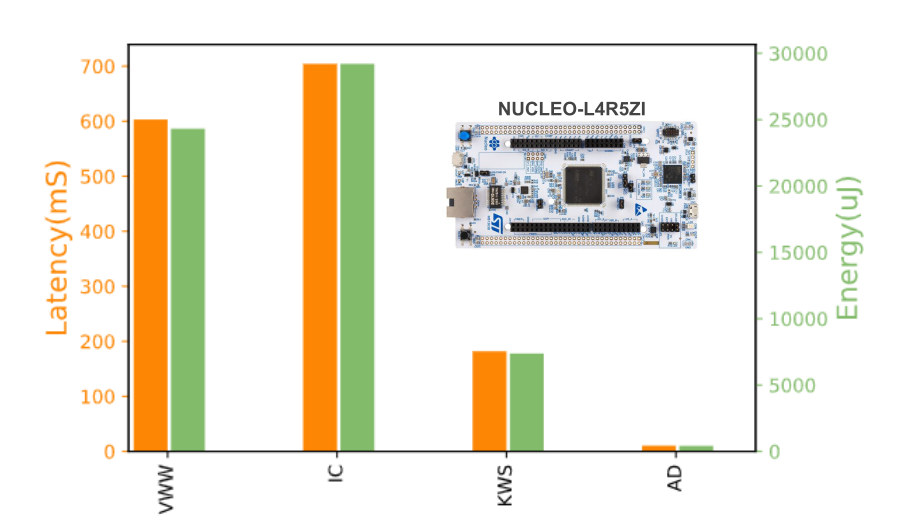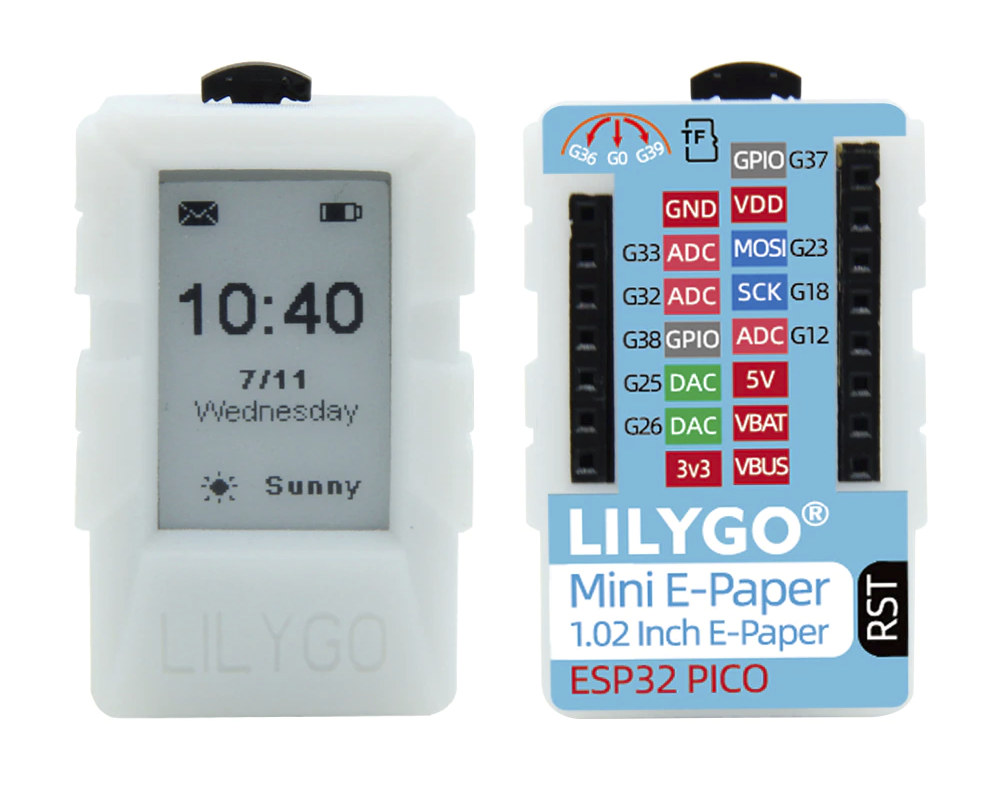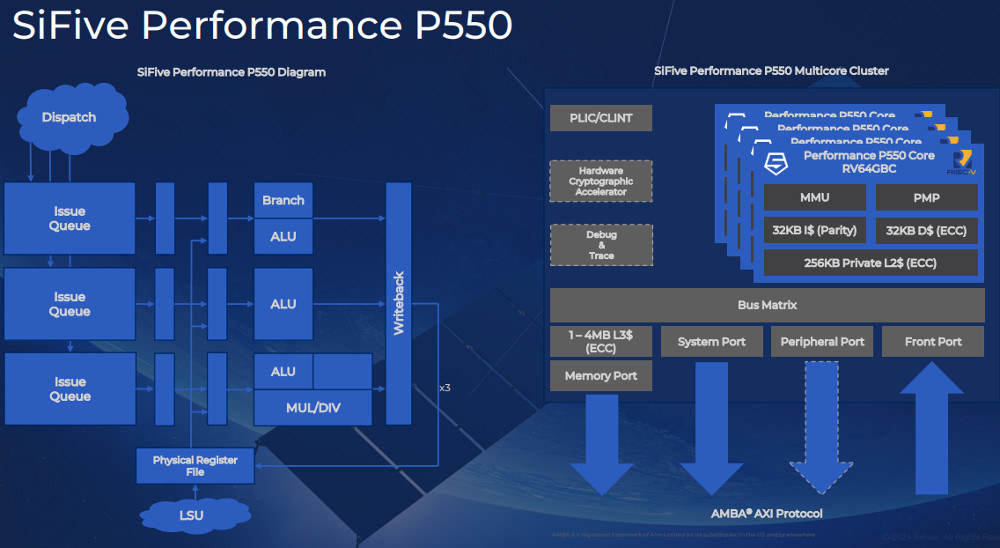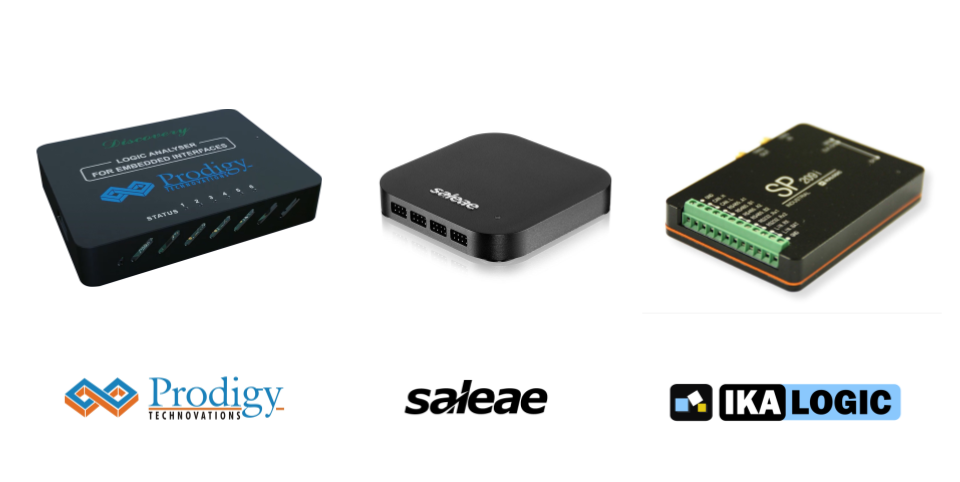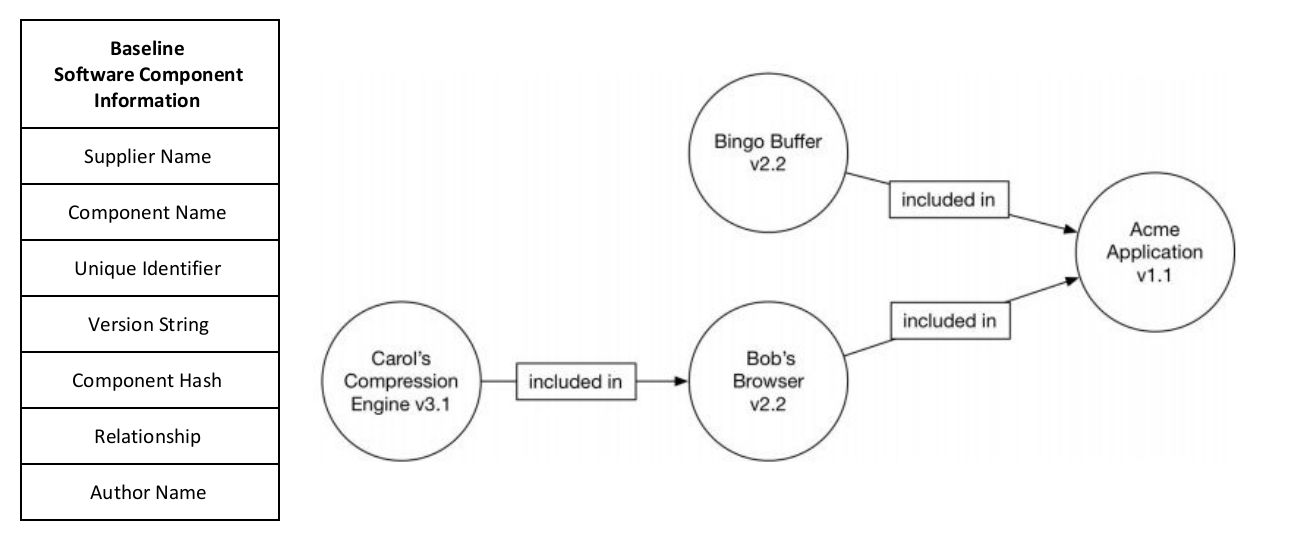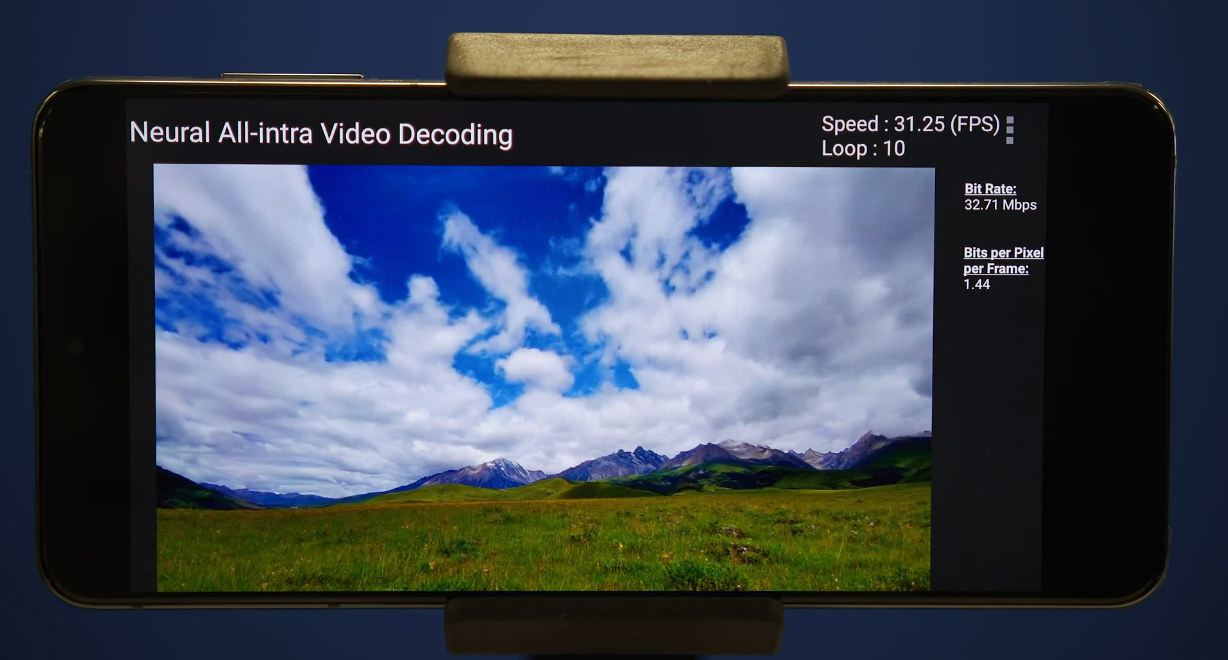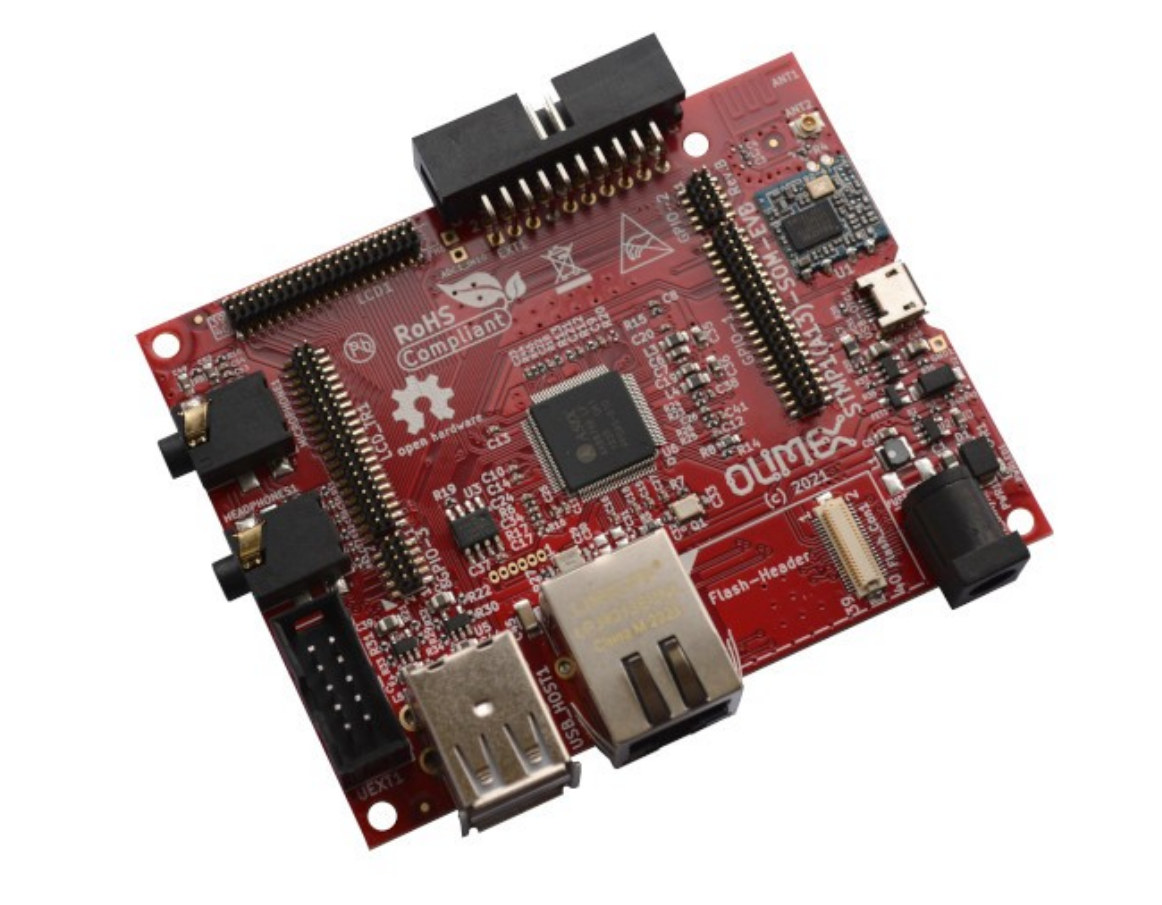As machine learning moves to microcontrollers, something referred to as TinyML, new tools are needed to compare different solutions. We’ve previously posted some Tensorflow Lite for Microcontroller benchmarks (for single board computers), but a benchmarking tool specifically designed for AI inference on resources-constrained embedded systems could prove to be useful for consistent results and cover a wider range of use cases. That’s exactly what MLCommons, an open engineering consortium, has done with MLPerf Tiny Inference benchmarks designed to measure how quickly a trained neural network can process new data for tiny, low-power devices, and it also includes an optional power measurement option. MLPerf Tiny v0.5, the first inference benchmark suite designed for embedded systems from the organization, consists of four benchmarks: Keyword Spotting – Small vocabulary keyword spotting using DS-CNN model. Typically used in smart earbuds and virtual assistants. Visual Wake Words – Binary image classification using MobileNet. In-home security […]
LILYGO Mini E-Paper Core combines ESP32 with 1.02-inch ePaper Display in 3D printed enclosure
LILYGO Mini E-Paper Core is another ESP32-based e-Paper display by LILYGO, but it’s a really tiny 1.02-inch e-Paper display housed in a 3D printed enclosure that reminds me of M5Stack Core with a 2-inch TFT LCD. The tiny low-power display also offers a MicroSD card socket, a reset button, a three-way user button, as well as headers for GPIOs, ADC, DAC, SPI, and more. LILYGO Mini E-Paper Core specifications: Wireless SiP – ESP32-PICO-D4 system-in-package with ESP32 dual-core processor, 4MB Flash, 2.4 GHz WIFi 4 & Bluetooth connectivity Storage – MicroSD card socket Display – 1.02-inch e-paper display with 128×80 resolution USB – 1x USB Type-C for power and programming Expansion 7-pin 2.54mm pitch header with 5x GPIO, 2x ADC, 2x DAC, 3.3V, and GND 8- pin 2.54mm pitch header with 4x GPIO, SPI, 1x ADC, 5V, VBUS, VBat, and GND Misc – Three-way toggle button connected to G36, G0, […]
SiFive Performance P550 is the fastest 64-bit RISC-V processor so far
SiFive has announced two RISC-V “Performance” cores with Performance P550 that should be the fastest 64-bit RISC-V processor so far with a SPECInt 2006 score of 8.65/GHz, as well as a Performance P270 Linux capable processor with full support for the RISC-V vector extension v1.0 rc. SiFive Performance P550 P550 highlights: RISC-V RV64GBC ISA 13 stage, 3-issue high-performance out-of-order pipeline Supports multicore coherence with up to 4 cores in a core complex Private 32KB+32KB L1 cache and a private 256KB L2 cache per core Up to 4MB L3 cache in a four-core cluster SPECint 2006 – 8.65/GHz 2.4 GHz in 7nm with a footprint of less than 0.25 mm SiFive compares the Performance P550 core to Arm’s Cortex-A75 with higher performance in SPECint2006 and SPECfp2006 integer/floating-point benchmark, all a much smaller area which would enable a quad-core P550 cluster on about the same footprint as a single Cortex-A75 core. There […]
PC-based Logic Analyzers Comparison: PGY-LA-EMBD vs Logic16 Pro vs SP209
Building an embedded system requires multiple devices to communicate with the central processor, generally through an SPI or I2C bus. If your system is quite complex and things don’t work out as expected, then a Logic Analyzer might save your day. So, choosing the correct Logic Analyzer is critical to a successful project. This article gives a PC-based Logic Analyzers comparison, and we’ll compare products from three companies: Prodigy Technovations, Saleae, and Ikalogic. Factors to keep in mind while selecting a Logic Analyzer Before we dive into the comparison part, we should be aware of a few points based on which we’ll compare them. Logic analyzers come with a certain number of channels. The higher the number of channels is, the costlier is the product. So, select the number of channels appropriately depending on the size of your project. Several other technical specifications should also be considered, which are listed […]
Posture correction smart sensor helps you sit or stand upright
It’s easy to adopt a bad posture either while sitting in front of a computer or while walking and your mobile, and over time this may lead to unaesthetic and/or painful postural disorders. To solve this issue, a posture correction smart sensor may be used in place of a posture belt with what looks like a GPS tracker placed on the back of the patient, and which notifies bad postures by vibrating and to your smartphone depending on a user-configured angle range. Specifications listed for the posture-correction-smart-sensor: Sensor – Unnamed Bosch gravity sensor Connectivity – Bluetooth 4.2 Misc Medical-grade gel patch to attach the device to the bag Vibration motor Battery – 200mAh; 30 minutes charge good for about 5 days when using it for about 8 hours per day Dimensions – 6 x 4 x 1.2 cm Weight – 16 grams. The device ships with a micro USB cable […]
Software bills of materials (SBOM) could help improve cybersecurity
There have been some widely publicized hacks in recent months including the SolarWinds hack and the Colonial pipeline cyber attack. Those two were particularly costly and disruptive, and the US government issued an executive order that lists some of the requirements to stretch cybersecurity. Since there are many attach vectors, the list of requirements is fairly long, but one that caught my eyes in the “Enhancing Software Supply Chain Security” section reads as follows: (vii) providing a purchaser a Software Bill of Materials (SBOM) for each product directly or by publishing it on a public website; Bills of materials (BoM) are commonly used for hardware design, but the idea behind a software bill of materials is to make sure outdated software libraries with known vulnerabilities are not included in a specific program. The 2021 Open Source Security and Risk Analysis (OSSRA) report exposes vulnerabilities and license conflicts found in more […]
Software-based neural video decoder leverages AI accelerator on Snapdragon 888
Sometimes hardware blocks got to work on tasks they were not initially designed to handle. For example, AI inference used to be mostly offloaded to the GPU before neural network accelerators became more common in SoC’s. Qualcomm AI Research has now showcased a software-based neural video decoder that leverages both the CPU and AI engine in Snapdragon 888 processor to decode a 1280×704 HD video at over 30 fps without any help from the video decoding unit. The neural video decoder is still a work in progress as it only supports intra frame decoding, and inter frame decoding is being worked on. That means each frame is currently decoded independently without taking into account small changes between frames as all other video codecs do. The CPU handles parallel entropy decoding while the decoder network is accelerated on the 6th generation Qualcomm AI Engine found in Snapdragon 888 mobile platform. This […]
Olimex STM32MP1 SoM and evaluation board support Linux 5.10
Olimex has just announced the availability of an STMicro STM32MP1 Cortex-A7/M4 powered system-on-module (SoM) and an evaluator board with respectively STMP15X-SOM available in extended and industrial temperature variants, as well as STMP1(A13)-EVB evaluation board that works with the new STM32MP1 module, as well as earlier A13-SOM Allwinner A13 based system-on-module. Beyond the hardware, the company told us their upcoming STMP1-OLinuXino-LIME2 SBC could support mainline Linux in February, and the company prepared some Linux 5.10 based Debian Buster and Ubuntu Focal images which are now also available for the STMP15X-SOM module. STMP15X-SOM system-on-module Specifications: SoC – STMicro STM32MP151/153/157 dual-core Cortex-A7 @ 650 to 800MHz and Arn Cortex-M4 real-time core @ 209 MHz System Memory – 256 or 512 MB DDR3L Storage – MicroSD card socket Audio – On-module audio codec Board-to-board connectors GPIO-1 40-pin connector with 39 GPIOs, 3x UARTs, 1x QuadSPI, 2x I2C, 2x eMMC GPIO-2 10-pin connector with USB […]


